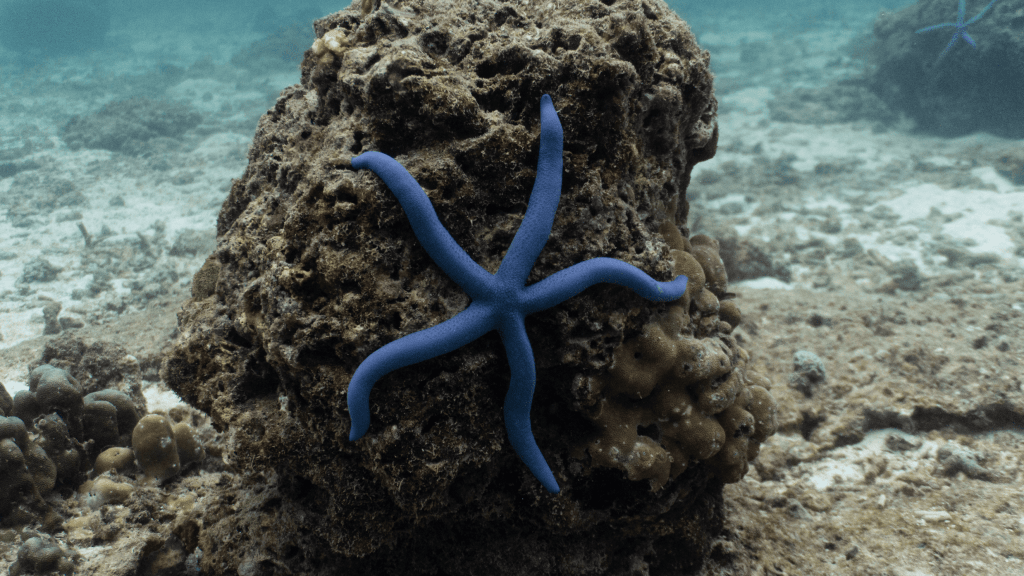Blue sea star

The Blue sea star (Linckia laevigata), or Linckia, is distinguished by its bright blue coloration, which can range from light blue to dark blue. Occasionally, individuals with a greenish or purplish hue are found. It typically has five rays (arms) that can reach lengths of up to 30 cm, although individuals with more rays are sometimes encountered. The body surface is smooth, with small tubercles, and often covered in tiny spines.
Linckia inhabits the tropical and subtropical waters of the Indo-Pacific region. It is found on coral reefs, in lagoons, and on sandy bottoms at depths ranging from 1 to 60 meters. It is most commonly encountered in the area of the Great Barrier Reef, as well as in the waters of Indonesia, the Philippines, Micronesia, and other parts of the Indo-Pacific region.
The Blue sea star feeds on microorganisms and organic particles found on the surface of corals and other substrates. Its main diet consists of bacterial films and detritus. To feed, it everts its stomach, covering the food item and digesting it externally.
Linckia reproduces both sexually and asexually. Sexual reproduction occurs through spawning, where males and females release their gametes into the water for fertilization. The larvae drift in the plankton until they settle on the bottom and transform into juvenile sea stars. Asexual reproduction occurs through autotomy: the sea star can detach one of its arms, which then regenerates into a new, complete individual.
It is not venomous or aggressive. These sea stars are generally slow-moving and harmless to humans. However, divers are advised not to touch sea stars or other marine life to avoid causing stress to the animals and potentially damaging their delicate skin.

